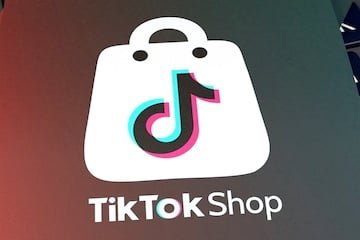TikTok is facing an unprecedented ban in the US, caught between its massive consumer popularity and mistrust from lawmakers. The crisis began in 2020 when some citizens and lawmakers became concerned about the Chinese social media company’s privacy practices and its relationship with the country’s communist government.
In April 2024, President Biden signed the Protecting Americans from Foreign Enemies Controlled Apps Act, which requires TikTok’s parent company to sell the platform by January 19, 2025.
The US Supreme Court will hear the appeal on January 10, 2025, and many commentators expect TikTok to survive in the United States, with or without new owners.
TikTok Store
Meanwhile, TikTok Shop has been a boon for some sellers. The social commerce platform is said to reach $50 billion in global gross merchandise volume in 2024. More than $10 billion of that amount is likely to come from the US market.

TikTok Shop is among the best social commerce platforms out there, but it probably hasn’t reached its full potential.
Combined, the nascent social commerce platform saw $137 million in Black Friday and Cyber Monday sales in 2024.
Still, TikTok Shop may be far from its potential as online retailers, big and small, wait to see how the ban plays out before adding another platform.
E-commerce platforms now include at least four types of sales environments.
- Electronic stores are storefronts from software vendors like Shopify, WooCommerce, BigCommerce, and Wix to name a few. Most e-commerce merchants use these storefronts as a home base or flagship store online.
- E-commerce marketplace — Amazon, Walmart, eBay, and many others — are also common, if not essential, for online sellers. The number of marketplaces continues to grow, perhaps most notably with Temu’s US reseller program.
- Mobile e-commerce application for Apple iOS and Google Android are common for enterprise retailers as primary or separate.
- Social trade storefronts includes TikTok, Facebook, Instagram and more. Published estimates put the total global social commerce market at $2.9 trillion. Consumers increasingly expect sellers to be represented on multiple social commerce platforms.
These different and sometimes repetitive e-commerce sales platforms are necessary because US customers tend to use several of them.
Mixed signals
One could argue that American consumers are sending many mixed signals. Consider a few examples of conflicting survey results.
- “49% of customers start and end their shopping journeys on a retailer’s website or app,” says the Hostinger article – points for e-commerce and mobile apps.
- “Amazon accounted for 37.6% of the US e-commerce market in 2023, followed by Walmart (6.4%), Apple (3.6%), eBay (3%), and (a) Target (1.9%).” introduces Jungle Scout — chalk one up for marketplace platforms.
- “56% of consumers start searching for products on Amazon,” reports Jungle Scout again – continuing the argument for the marketplace.
- “People between the ages of 18 and 34 made the most purchases through social media, with about 73% of them reporting that they made a purchase through social media channels,” says an article from SellersCommerce that confirms the need for social commerce as well.
These statistics confirm why online merchants are using many platforms in combination – including the TikTok Shop after the paranoia ban.
TikTok bought out
So if, as some predict, TikTok remains in the US market and its future is no longer in doubt, expect a boom in sellers. Many e-commerce businesses, from small merchants to large enterprises, are likely to start offering their products on the social platform.
